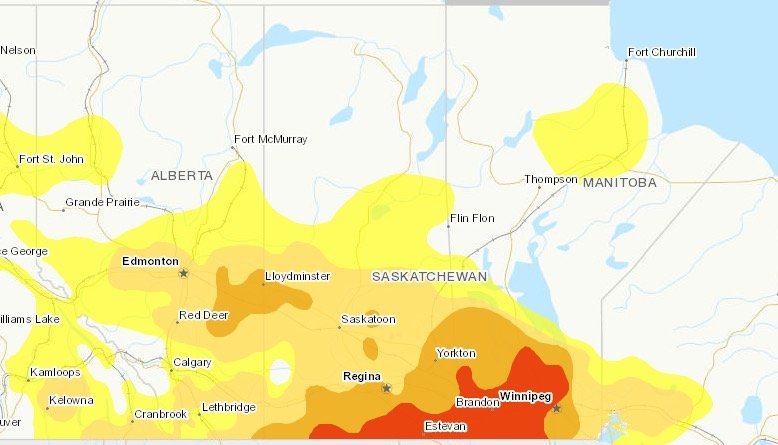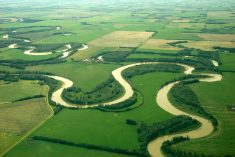MarketsFarm — The newly released map from Agriculture and Agri-Food Canada’s Canadian Drought Monitor (CDM) shows the Prairies’ ongoing drought getting worse.
According to AAFC’s nationwide map released on Friday, southwestern Manitoba, parts of southern Saskatchewan and the southeast corner of Alberta are under CDM’s classification of Extreme (D3) drought as of April 30.
Communities within these areas include Winkler, Selkirk and Brandon in southern Manitoba and Weyburn and Estevan in southeastern Saskatchewan. This is despite mid-month rains around Regina, Shaunavon and Gull Lake which replenished soil moisture but did not improve conditions based on CDM’s metrics.
Read Also

Senft to step down as CEO of Seeds Canada
Barry Senft, the founding CEO of the five-year-old Seeds Canada organization is stepping down as of January 2026.
“However, even with this much-needed moisture, Severe drought (D2) and Extreme drought (D3) were expanded across southern Saskatchewan given a significant lack of moisture through the winter season and a dry 2020 growing season,” the assessment said.
D2 is considered to be a drought event occurring every 10 to 20 years, while a D3 is believed to occur every 20 years or more.
“In southern Manitoba, exceptional short- and long-term dryness persisted, which led to an expansion of the previously small pockets of Extreme drought (D3). This dryness, in combination with snow melt, exposing soils to sunlight, winds and evaporation, led to D3 conditions expanding to the southwest corner of the province including Neepawa to Russell and Virden and the Interlake region.”
In Alberta, Moderate drought (D1, once every five to 10 years) conditions were expanded to southern parts of the province, but recent precipitation across the Rocky Mountains has ended drought conditions there. Areas around Calgary are now classified as Abnormally dry (D0, every three to five years), while the area around Vegreville is at D2, as well as near North Battleford in western Saskatchewan.
While adequate precipitation in east-central Saskatchewan and the Parkland region of Manitoba helped alleviate conditions which ranged from D0 to D2, the dry conditions are even more widespread and more intense.
“Seventy-seven per cent of the Prairie region was classified as either Abnormally dry (D0), in Moderate drought (D1), Severe drought (D2) or Extreme drought (D3); this includes nearly 93 per cent of the region’s agricultural landscape,” AAFC’s assessment added.
— Adam Peleshaty reports for MarketsFarm from Stonewall, Man.

















